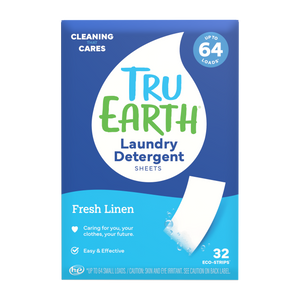Stains on clothes can turn a favorite outfit into a source of frustration. Among the list of potential culprits, dry erase markers present a unique challenge.
Designed for easy removal from non-porous surfaces like whiteboards, these markers can create stubborn stains when they come into contact with fabric. In this comprehensive guide, we'll explore the intricacies of dry erase marker stains, exploring the components of these markers and mastering effective stain removal techniques.

Understanding Dry Erase Marker Composition
Before tackling the removal process, it's essential to comprehend what makes up a dry erase marker. These markers typically consist of pigments, solvents, binding agents, and other additives.
Each component serves a specific function, contributing to the marker's functionality on whiteboards but posing challenges when transferred onto fabric.
Pigments: The Color Carriers
Dry erase markers utilize pigments to provide vibrant colors. While ideal for whiteboard surfaces, these pigments can adhere to fabric fibers, resulting in visible stains on clothes.
Solvents: Liquidity and Challenges
Solvents in dry erase markers maintain the ink in a liquid state for smooth application. However, when these solvents come into contact with fabric, they can penetrate the fibers, making the ink more challenging to remove and potentially spreading the stain.
Binding Agents: Ensuring Adhesion
Binding agents help the ink adhere to surfaces. In the case of fabric, these agents contribute to the marker's adhesion to fibers, making the stain more resistant to simple cleaning methods.
Other Additives: Special Properties
Dry erase markers may contain additives for specific properties, such as quick-drying or odor control. Depending on these additives, additional challenges may arise in stain removal, necessitating tailored cleaning approaches.
Dealing with Dry Erase Marker Stains: A Step-by-Step Guide
Now that we understand the components, let's explore effective steps to remove dry erase marker stains from clothes. Follow this comprehensive guide to master stain removal:
Step 1: Act Quickly
The key to successful stain removal is acting promptly. The longer the stain sits on the fabric, the more challenging it becomes to remove. Begin the cleaning process as soon as you notice the stain.
Step 2: Blot, Don't Rub
Use a clean cloth or paper towel to blot the stain gently. Avoid rubbing, as it can spread the ink further into the fabric. Blotting helps lift excess ink from the clothes.
Step 3: Check Fabric Care Labels
Before applying any cleaning agents, check the care labels on your clothing. Different fabrics require different treatment methods, and it's crucial to ensure that the cleaning process won't damage the material.
Step 4: Test in an Inconspicuous Area
Before applying a cleaning solution to the stained area, perform a patch test in an inconspicuous area to ensure that the fabric won't be adversely affected. This step is particularly important for colored or delicate fabrics.
Step 5: Choose an Appropriate Cleaning Solution
The choice of cleaning solution depends on the fabric and the severity of the stain. Common options include:
- Isopropyl Alcohol: Effective for removing many types of ink stains.
- Hairspray: Some contain alcohol, which can help break down the ink.
- Acetone (for synthetic fabrics): Use with caution and only on fabrics that can withstand acetone.
Step 6: Apply the Cleaning Solution
Dampen a clean cloth or cotton ball with the chosen cleaning solution. Gently blot the stained area, working from the outside of the stain toward the center. Continue until the stain begins to lift.
Step 7: Launder as Usual
After treating the stain, launder the garment following the care instructions. Check to ensure the stain is fully removed before drying, as heat can set the stain.
Step 8: Repeat if Necessary
Stubborn stains may require multiple treatments. If the stain persists after the first attempt, repeat the process until the fabric is clean.
Preventive Measures: Keeping Clothes Stain-Free
Prevention is the best defense against dry erase marker stains on clothes. Consider these preventive measures to minimize the risk of stains:
Use Aprons or Protective Clothing
If you frequently work with dry erase markers, consider wearing an apron or protective clothing to shield your garments from accidental stains.
Be Mindful During Use
When using dry erase markers, be mindful of your movements to avoid contact with your clothing. Keep the cap securely closed when not in use.
Choose Washable Fabrics
Opt for washable and stain-resistant fabrics, especially if you anticipate regular exposure to potential staining agents.
Act Swiftly
If a mishap occurs, act promptly to address the stain. The faster you respond, the higher the likelihood of successful stain removal.

A Stain-Free Wardrobe Awaits
Mastering stain removal, especially from unconventional sources like dry erase markers, empowers you to maintain a stain-free wardrobe.
Armed with knowledge about marker composition and effective cleaning techniques, you can confidently address stains and extend the lifespan of your favorite clothes. Remember, a quick response and the right cleaning approach can make the difference between a stained garment and a pristine one.

